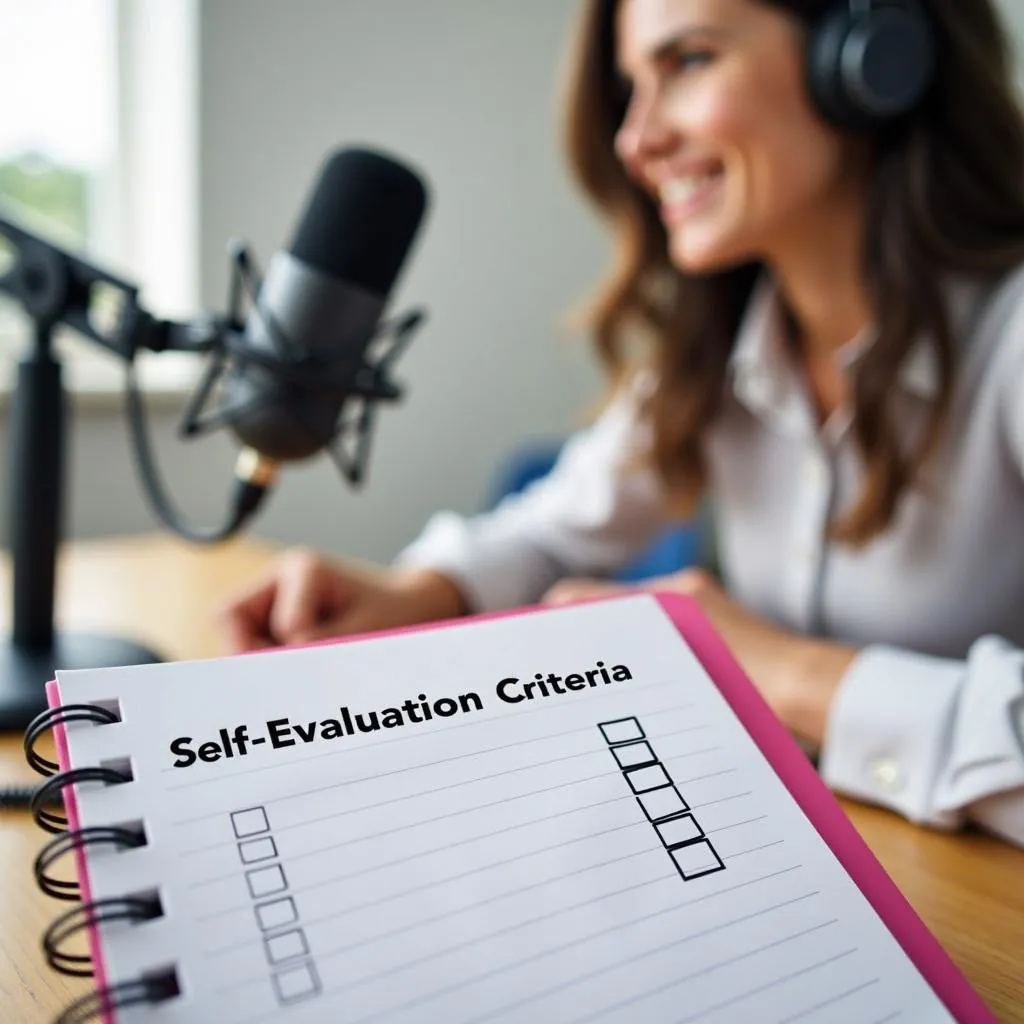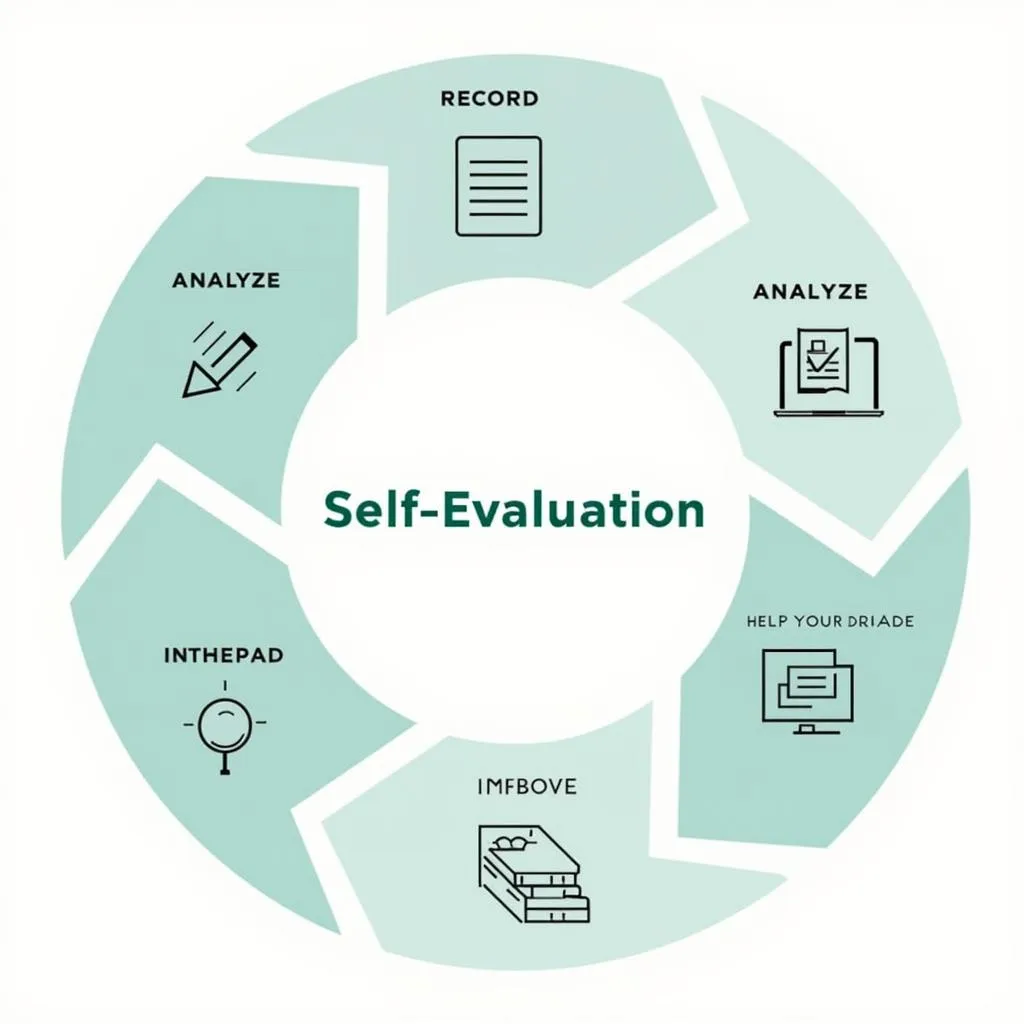Mastering the speaking section of the PTE Academic exam requires not only practice but also the ability to critically assess your own performance. Self-evaluation is a crucial skill that can significantly improve your scores and boost your confidence. In this comprehensive guide, we’ll explore effective techniques to self-evaluate your PTE speaking answers, helping you identify areas for improvement and refine your speaking skills.
Understanding the Importance of Self-Evaluation in PTE Speaking
Self-evaluation is a powerful tool in your PTE preparation arsenal. It allows you to:
- Identify your strengths and weaknesses
- Track your progress over time
- Develop a more objective view of your performance
- Save time and money on external feedback
By learning to assess your own speaking answers, you’ll become more aware of the specific areas that need attention, leading to more targeted and efficient practice sessions.
 Importance of Self-Evaluation in PTE Speaking
Importance of Self-Evaluation in PTE Speaking
Key Criteria for Self-Evaluating PTE Speaking Answers
To effectively self-evaluate your PTE speaking responses, focus on these critical aspects:
- Oral Fluency
- Pronunciation
- Content
- Grammar and Vocabulary
Let’s delve into each of these criteria and explore how you can assess them in your own responses.
Assessing Oral Fluency
Oral fluency refers to your ability to speak smoothly and at a natural pace. To evaluate this aspect:
- Record your responses and listen for hesitations, pauses, and repetitions
- Time your responses to ensure you’re speaking at an appropriate speed
- Pay attention to your intonation and stress patterns
Dr. Emma Thompson, a renowned PTE coach, advises: “Aim for a speech rate of about 150-160 words per minute. This pace allows for clear articulation while maintaining fluency.”
Evaluating Pronunciation
Pronunciation is crucial for scoring well in the PTE speaking section. Here’s how to assess it:
- Focus on individual sounds, especially those that are challenging in your native language
- Listen for word stress and sentence stress
- Check if you’re using the correct intonation for questions and statements
Use online pronunciation resources to compare your pronunciation with standard English pronunciation. How to use PTE official resources effectively can provide valuable insights into utilizing official materials for pronunciation practice.
Analyzing Content
Content evaluation involves assessing whether your response adequately addresses the task. To do this:
- Compare your answer to the question or prompt given
- Check if you’ve included all necessary information
- Evaluate the logical flow and coherence of your ideas
Remember, it’s not just about speaking fluently; your content must be relevant and well-structured.
 Analyzing Content in PTE Speaking Answers
Analyzing Content in PTE Speaking Answers
Checking Grammar and Vocabulary
Assessing your grammar and vocabulary usage is essential for improving your overall speaking performance:
- Listen for common grammatical errors (e.g., subject-verb agreement, tense consistency)
- Note any instances where you struggle to find the right word
- Evaluate the variety and appropriateness of your vocabulary
Prof. James Liu, a linguistics expert, states: “A rich vocabulary doesn’t mean using complex words unnecessarily. Focus on using a range of words accurately and in context.”
Practical Strategies for Self-Evaluation
Now that we’ve covered the key criteria, let’s explore some practical strategies to enhance your self-evaluation process:
-
Record and Transcribe: Record your responses and transcribe them. This allows you to see your speech in written form, making it easier to spot errors and areas for improvement.
-
Use Scoring Rubrics: Familiarize yourself with the PTE scoring criteria and create a simplified rubric for self-assessment.
-
Compare with Model Answers: Listen to high-scoring sample responses and compare them with your own. Note the differences in fluency, pronunciation, and content organization.
-
Peer Review: Exchange recordings with a study partner. Sometimes, others can spot issues that you might overlook in your own speech.
-
Track Progress Over Time: Keep a log of your self-evaluations to monitor your improvement in specific areas.
 Practical Strategies for PTE Speaking Self-Evaluation
Practical Strategies for PTE Speaking Self-Evaluation
Common Pitfalls in Self-Evaluation
While self-evaluation is invaluable, be aware of these common pitfalls:
- Being overly critical or lenient with yourself
- Focusing too much on one aspect while neglecting others
- Comparing yourself to unrealistic standards
- Neglecting to act on the insights gained from self-evaluation
To avoid these, maintain a balanced perspective and remember that improvement is a gradual process.
Leveraging Technology for Self-Evaluation
In today’s digital age, various tools can aid in your self-evaluation process:
- Speech recognition software to check pronunciation
- AI-powered language learning apps for instant feedback
- Online forums and communities for peer review and expert advice
While these tools are helpful, they should complement, not replace, your personal assessment skills.
Conclusion: Empowering Your PTE Journey Through Self-Evaluation
Learning how to self-evaluate your PTE speaking answers is a game-changer in your exam preparation. By consistently applying the techniques and strategies discussed, you’ll develop a keen ear for your own speech patterns, leading to more targeted practice and improved performance.
Remember, self-evaluation is a skill that develops over time. Be patient with yourself and celebrate small improvements. With dedication and regular practice in self-evaluation, you’ll be well on your way to achieving your desired score in the PTE speaking section.
Frequently Asked Questions
-
How often should I self-evaluate my PTE speaking answers?
Aim to self-evaluate after each practice session. Consistency is key to tracking progress and identifying patterns in your performance. -
Can self-evaluation replace feedback from a tutor?
While self-evaluation is valuable, it’s best used in conjunction with professional feedback. A tutor can provide insights you might miss on your own. -
What’s the best way to record my PTE speaking practice?
Use a high-quality microphone or smartphone in a quiet environment to ensure clear recordings for accurate self-evaluation. -
How can I improve my ability to identify errors in my speech?
Regularly listen to native English speakers and high-scoring PTE responses. This will train your ear to recognize proper pronunciation and fluency. -
Is it normal to feel discouraged when self-evaluating?
It’s common to feel frustrated at times, but remember that recognizing areas for improvement is the first step towards progress. Stay positive and focus on your growth.